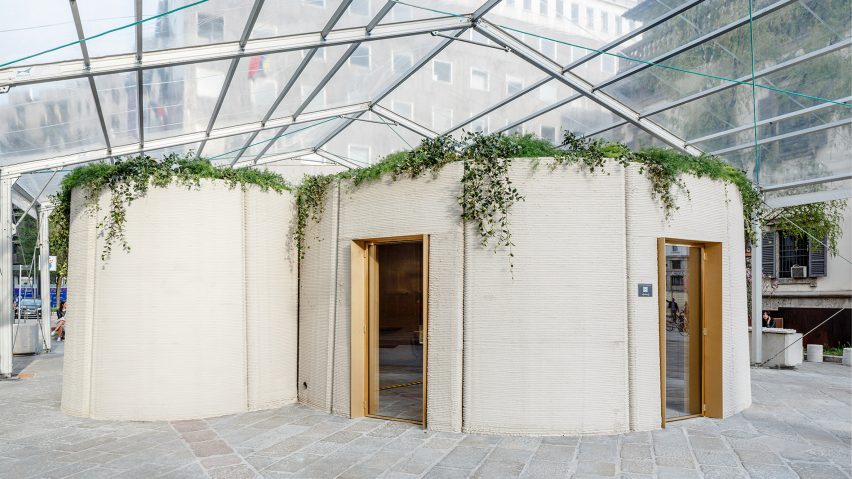
CLS Architetti and Arup use a portable robot to 3D print a house in Milan
Engineering firm Arup and architecture studio CLS Architetti have used a portable robot to 3D print a concrete house, which is on show for Milan design week.
Printed onsite on Milan's Piazza Cesare Beccaria, the 100-square-metre house was formed over the course of a week. Made up of 35 modules, the house features curved walls, a living area, bedroom, kitchen and bathroom.
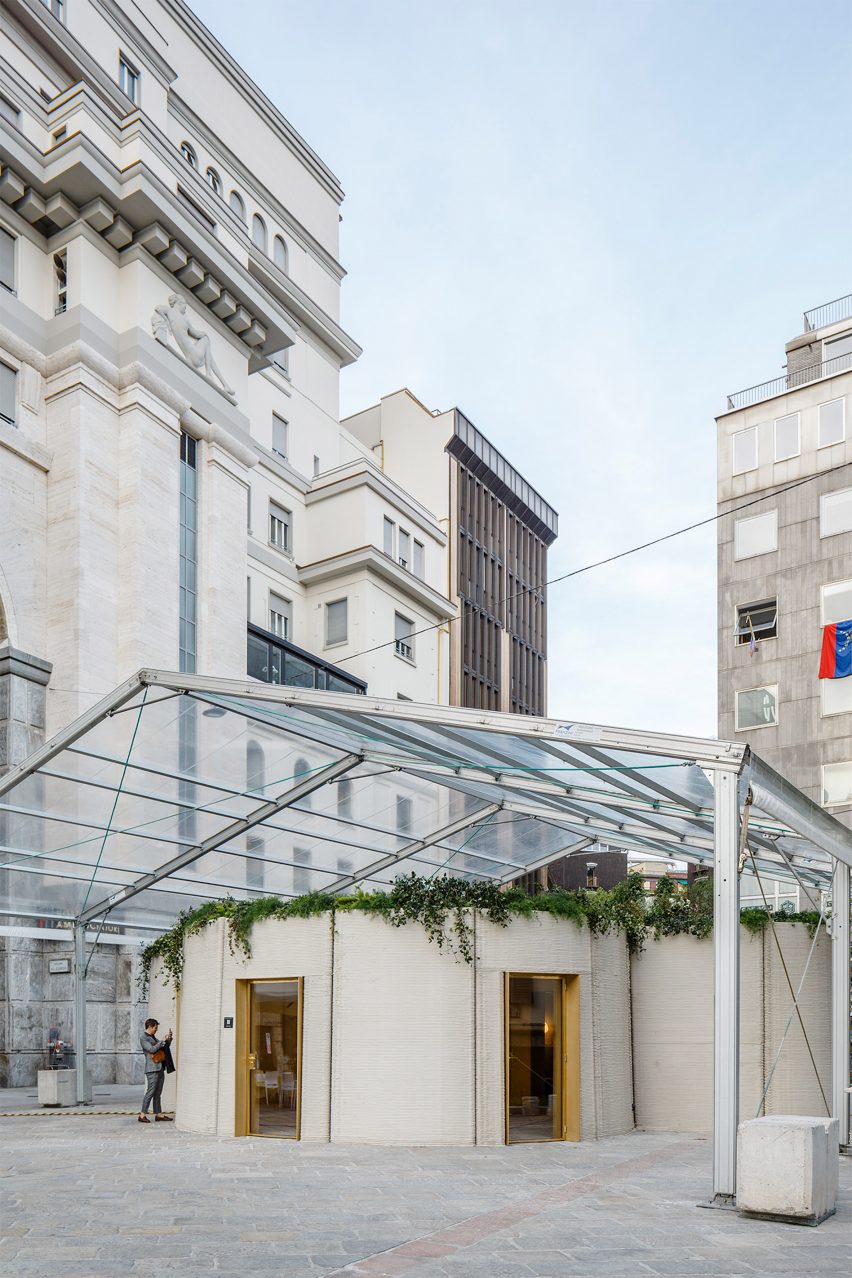
The walls were built by a robot designed by Cybe Construction, a 3D printing company from Netherlands, using a special mix of concrete and additives developed by Italcementi, one of the world's largest cement suppliers. The roof, windows and doors were added afterwards.
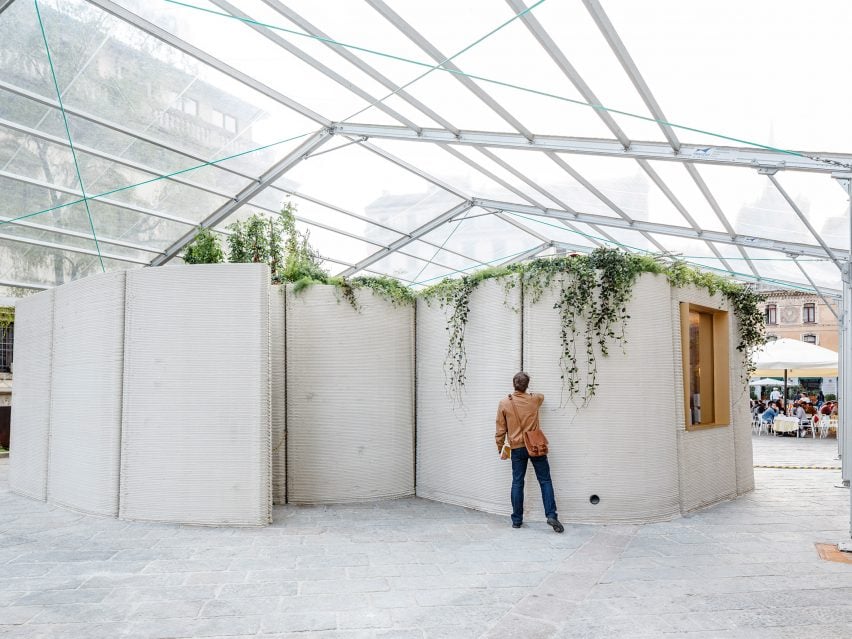
The concrete mix is squeezed through the robot's nozzle like toothpaste from a tube, and each section of wall is built from the ground-up in layers. Arup stated that the full house was printed in just 48 hours effective time.
"Each section of wall takes around an hour to build and the concrete cures in five minutes," CLS Architetti told Dezeen. "There are possibilities to programme the robot to make them larger or smaller or maybe even different shapes. You can also print furniture."
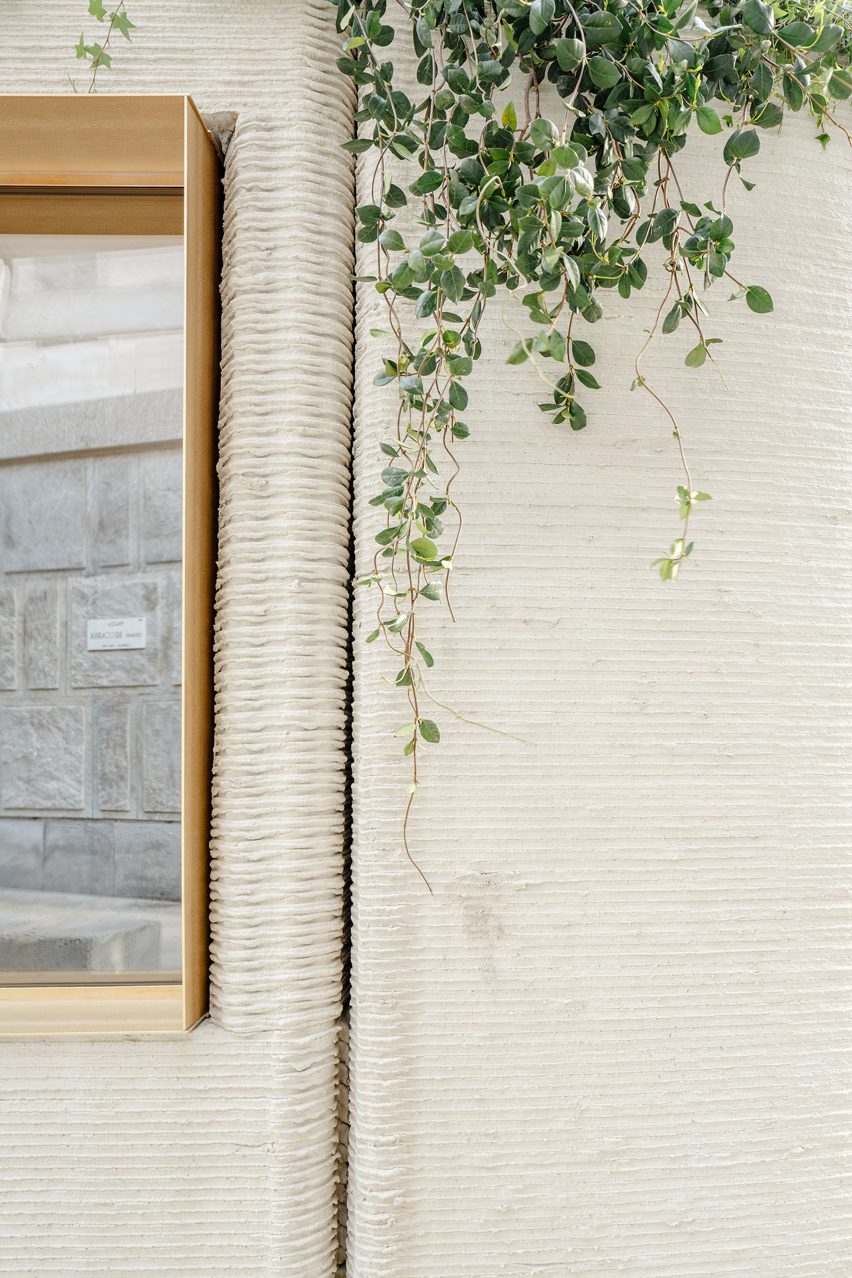
The printed house is a prototype but the firm are working to develop it. CLS Architetti believes that the technology could be used to create housing quickly and cost-effectively where it is needed the most.
"The whole idea was to show to the world that there is an alternative possibility for construction – that with new 3D printing technology it is possible to build a house in a week," said the studio.
"And also, to show that there is a flexibility with the plans – the walls don't always have to be straight and that it could be built anywhere; you could even print on Mars if you want."
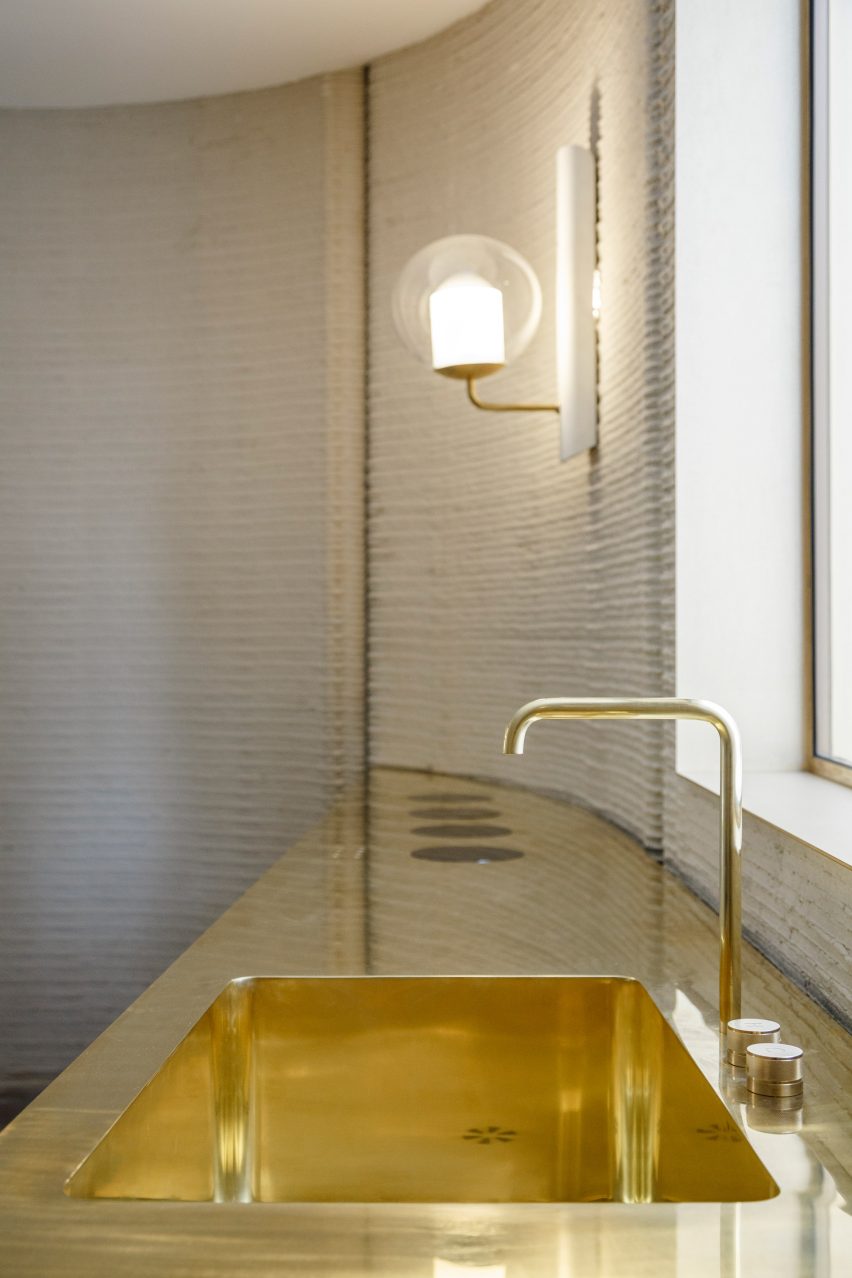
At the end of Milan design week, the house will be transported to Italcementi's headquarters to be displayed. Each of the modules will be lifted and transported separately, then reassembled on site.
"We really hope to move the project on to build a real house as this one is only a prototype," said studio. "We want to study the foundations, joints and connections and understand how it can last not only for just one week, but for years."
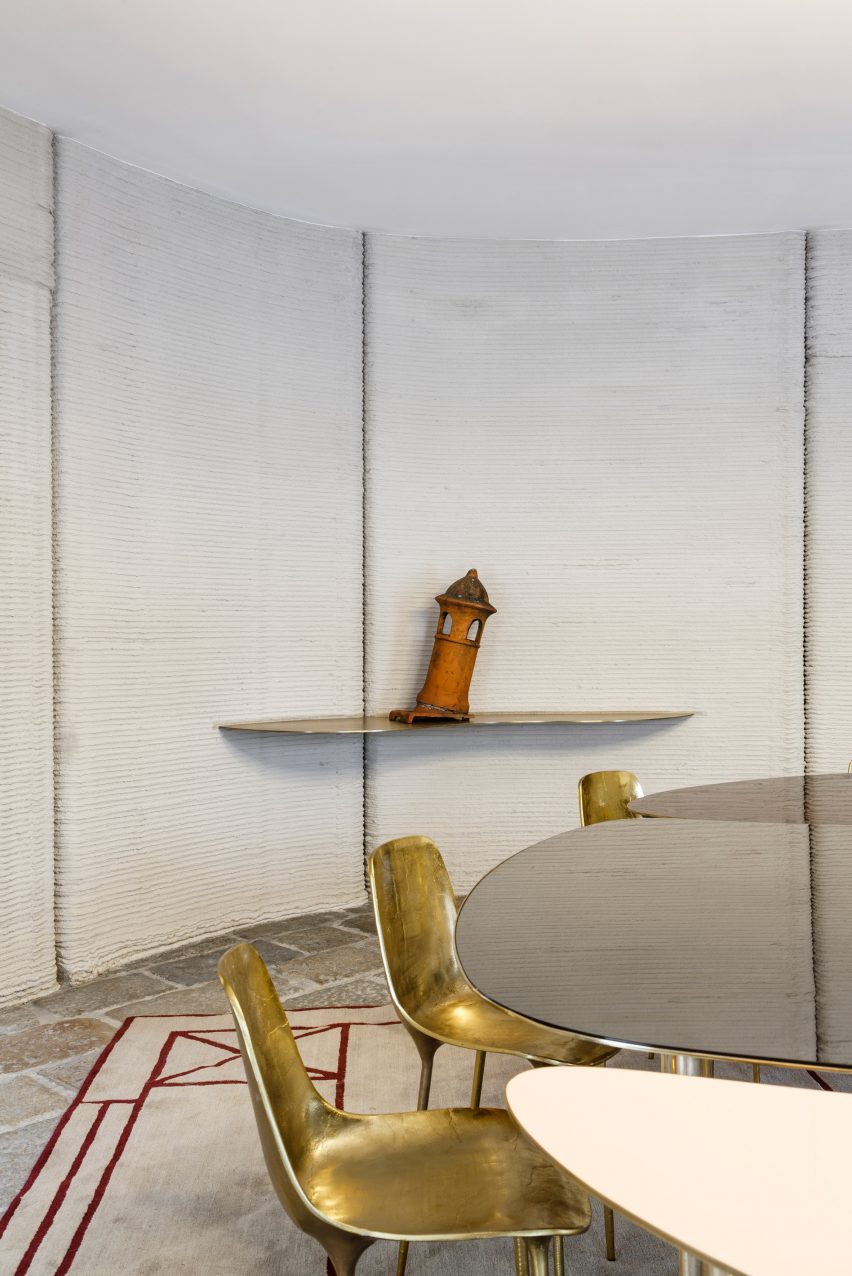
Arup said that the 3D printing method reduces construction waste by increasing efficiencies during the building process and allows materials to be reused at the end of the building’s life, rather than ending up as landfill.
"We need to make a major shift in the way the construction industry operates, away from today's 'make, use, dispose mentality," said Guglielmo Carra, Europe materials consulting lead at Arup.
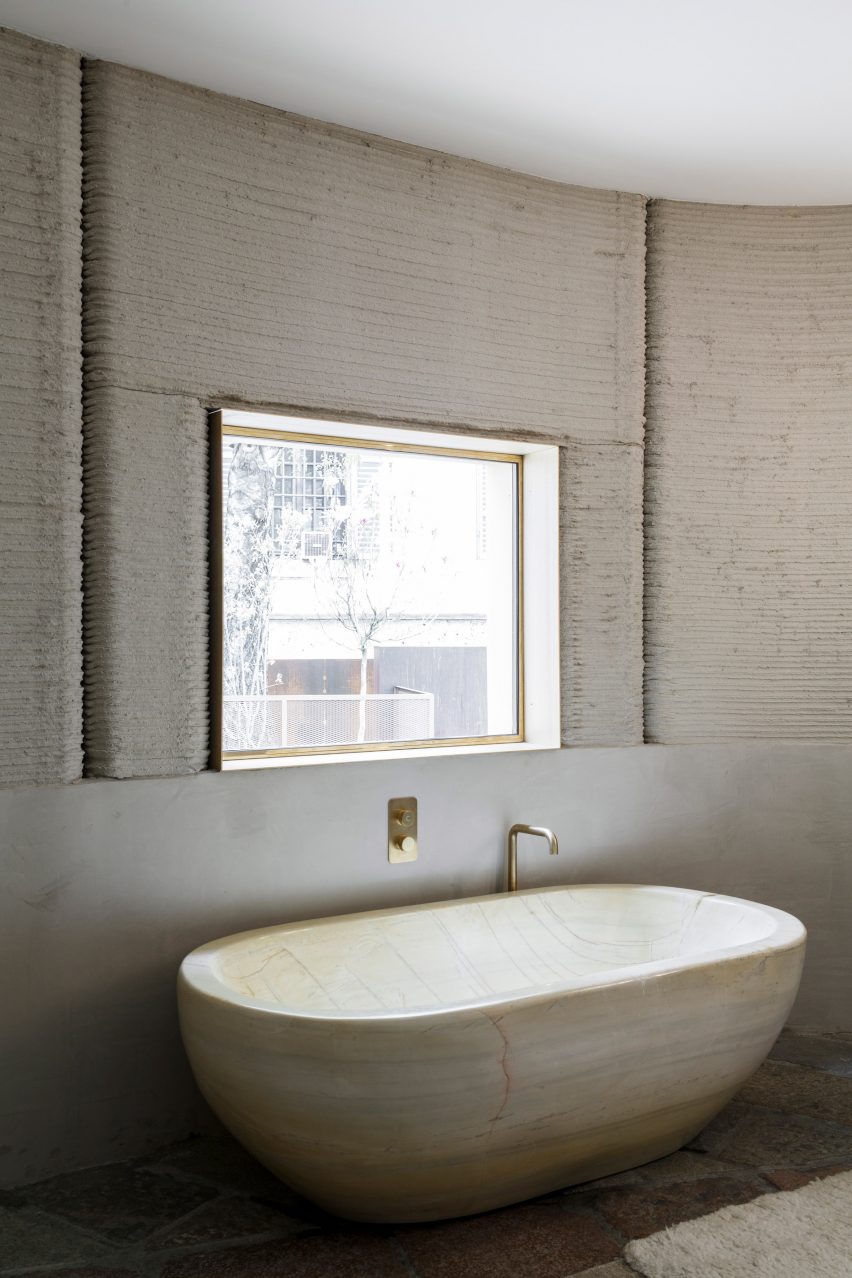
"We've shown with this building that 3D printing technology is now advanced enough to take on more complex structures, and design buildings to be repurposed or reused at the end of their life," he continued. "This technology is critical to helping our industry become far more accurate, efficient and less wasteful."
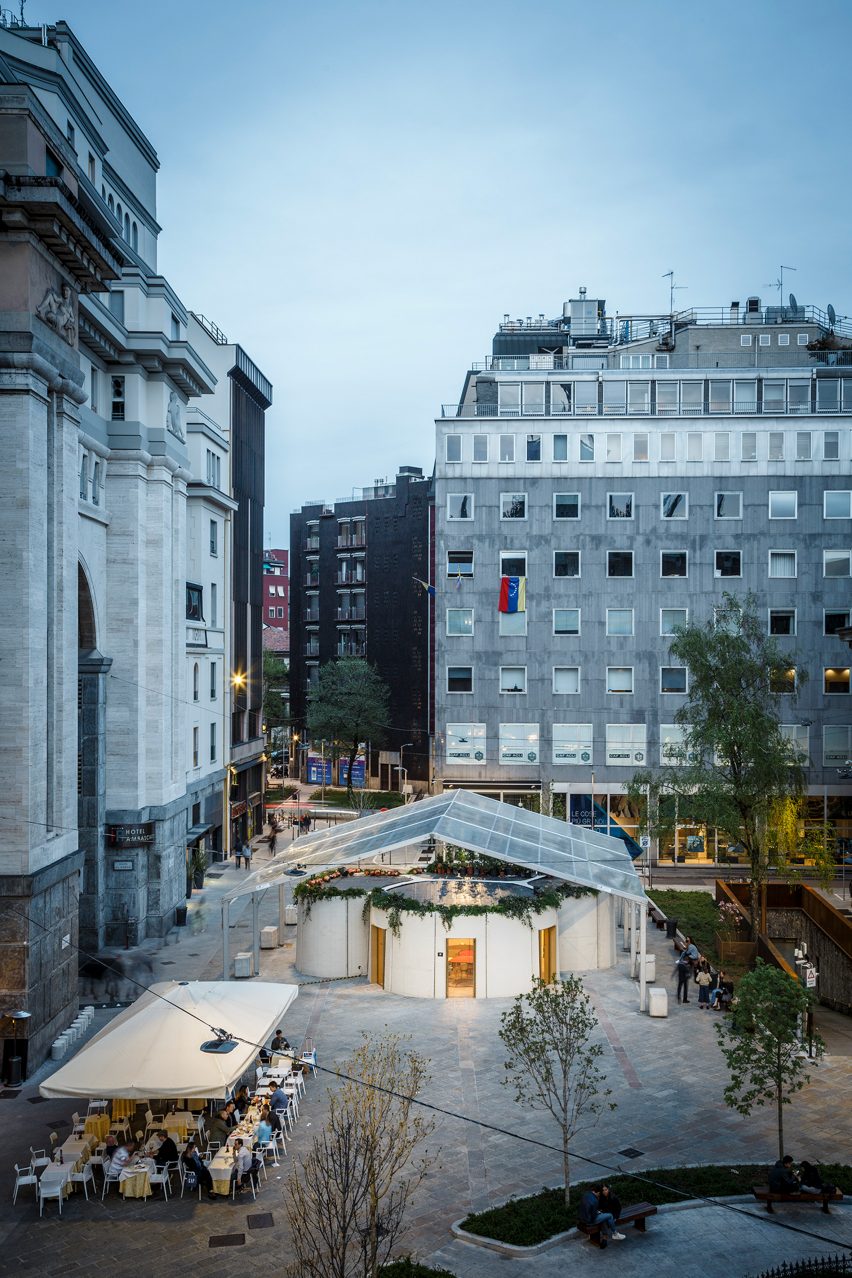
The rise of 3D printing over the past decade led to numerous architects and designers trying to become the first to build a 3D-printed house. Others have been completed in China and Russia, plus a micro home has been 3D printed in Amsterdam.
This one will be on show from 17 to 22 April 2018 as part of Milan design week.
Elsewhere in Milan, students from ÉCAL have transformed a Milanese Palazzo into a 3D printing factory, where they are producing a range of design objects on demand.